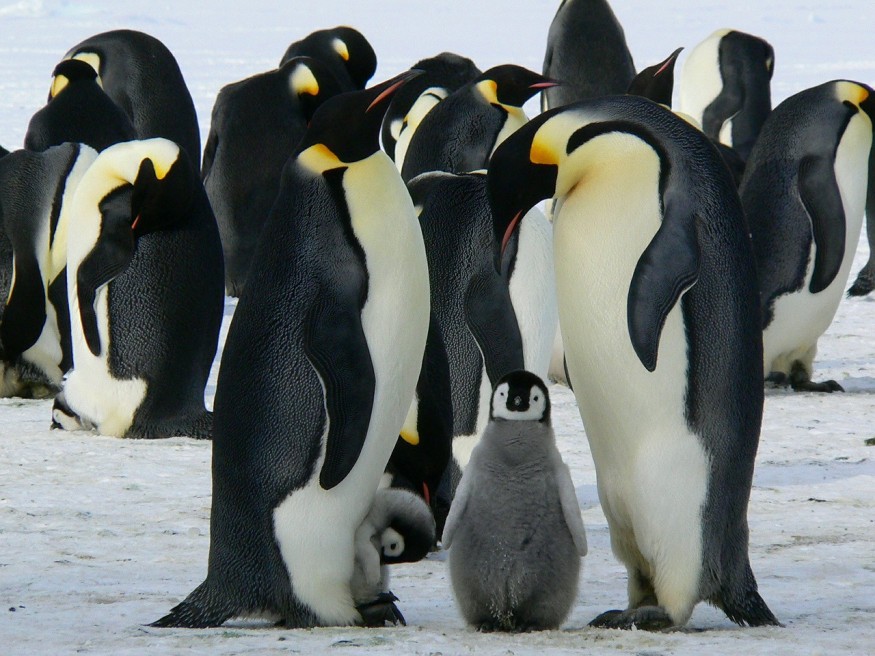The Antarctic's melting snow has revealed the frozen remains of penguins as old as 800 years to 5,000 years.
With the entire world warming up and surpassing the 1.1º C threshold in temperature increase, the ice sheets worldwide are melting, and exposing Viking remains, ancient viruses, methane, diesel, and now, dead penguins.
A Discovery
On the coast of the Antarctic at Cape Irizar, the researchers who made the discovery initially thought they were fresh remains of Adélie penguins. But the carcasses surprised them when they applied carbon-dating on the bird carcasses. Those that were 5,000 years old were not as preserved as the others.
The findings have been published in the journal Geology.

READ: The Year 2100 Will See the Fastest Melting of Greenland's Ice Sheet in the Last 12 Millennia
An Abandoned Habitat of Penguins
The site has been identified in the past by pebble mounds used by penguins to build nests. The researchers initially saw chick bones of penguins littering the surface, and this puzzled them because this area has not been known to harbor penguins since the 1900s when records of the area were first made.
However, after more excavation, they recovered penguin feathers, eggshells, and bones. They revealed that it was indeed a penguin habitat that has long been abandoned.
According to the University of North Carolina at Wilmington marine biologist Steven Emslie, their samples include both old and relatively recent remains. This implies that the cape area was used and abandoned by penguins many times over several millennia.
It has been speculated that penguins could have moved from the area because of climate shifts or an increase in snow. The additional snow froze, preserved, and buried the carcasses.
Emslie says he has never seen such a site during his many years of work in the Antarctic region.
READ ALSO: Melting Doomsday Glacier in Antarctica Could Cause 10-Ft Sea Level Rise
Rise in Temperature
Since the period of the 1980s, the average yearly temperature in this area of Antarctica rose from 1.5 to 2º C, and the melting ice exposed the remains.
According to Emslie, the relatively recent melting showed various ages of penguin remains. He suggests that the inland stretching of so-called "landfast ice," or sea ice that has fastened itself to the mainland coastline, could have formed when ambient temperatures dropped, which caused the area to become uninhabitable to penguins. The opposite is now occurring, with a lot of the ice melting.
Return of the Penguins
With the melting ice, Cape Irizar may well become attractive to penguins once again, as it has a long history of playing host to these animals.
Its centuries-long hiatus may finally be at an end, as Emslie says that the land has many pebbles that penguins need for building nests. He won't be surprised if the penguins recolonize the area once more.
Loss and Return of Species Due To Climate Change
Due to climate change, many of the planet's ice is melting, and aside from exposing colonies of animals that have long died, it is also surprisingly reviving other supposedly dead life forms back from their frozen entombment. These "zombie" organisms from the ice age include simple bacteria and multi-cellular animals.
According to the University of Alberta moss researcher Catherine LaFarge, one couldn't have assumed that organisms that have been frozen for centuries or millennia can still be viable.
And as the melting snow endangers many other organisms on the planet, Cape Irizar in the Antarctic and other places may favor penguins and many other species.
READ NEXT: Climate Change Causes Ice Larger than Paris to Break Off from Greenland Glacier and Shatter
Check out for more news and information on Climate Change on Nature World News.
© 2026 NatureWorldNews.com All rights reserved. Do not reproduce without permission.





